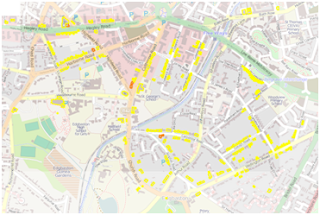 On Sunday I completed a short 4Km stretch around Blockley, the last remaining gap in the OSM map. Thanks are due to everyone who contributed over the years, collaborating in mapping this long distance route.
On Sunday I completed a short 4Km stretch around Blockley, the last remaining gap in the OSM map. Thanks are due to everyone who contributed over the years, collaborating in mapping this long distance route.
The Heart of England Way stretches for some 100 miles through England’s Midlands. This route proves that the Midlands does not justify its image of an industrial wasteland. The Way starts in Staffordshire’s heathlands and forest on Cannock Chase and passes through the small city of Lichfield with its three-spired cathedral known as the “Mother of the Midlands”. It then passes between the industrial giants of Coventry and Birmingham, although with the peaceful countryside it chooses, you wouldn’t know they were there. Rural Warwickshire beckons as the Way meanders through the remains of the Forest of Arden. The final part sees it sharing much of its route with the Monarch’s Way as it leapfrogs from one cosy Cotswold village to another. It finally ends up in the tourist honey-pot of Bourton-on-the-Water, where it links with the Cotswold Way.
The most popular Guide to the Way by Richard Sale has the route going the other way, but describing it this way reflects more the order in which we mapped it.
Official website here
Best map is of course Lonvia’s Hiking map
If this statement is true, and I believe it is, then an OSM map of a city is meta-art!

